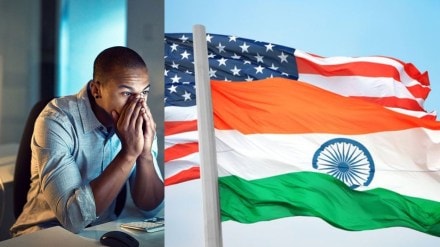The practice of Indian techies working for US corporations is not new. Since the 1990s, this has been ingrained in the US corporate culture. The majority of high-paying positions in the US are now going to foreign-born workers, according to recent debates across various social media platforms. American netizens also suggest that this has led many of the hiring managers to hire only foreign-born workers with little opportunity for native-born. They say, “Nepotism is ruling everything, and you see the acceleration at the end.”
Validating this argument, a recent study by the US Bureau of Labor Statistics suggests that post-pandemic the employment levels of foreign-born workers have improved far better than the native-born. Both groups experienced a steep drop in employment levels around March-April 2020 due to the COVID-19 pandemic, but the decline was significantly sharper for foreign-born workers.
However, post-pandemic, foreign-born employment rebounded more quickly and strongly, surpassing pre-pandemic levels by mid-2021 and continuing to rise steadily through 2024, peaking at nearly 118 (keeping the employment base at 100) before slightly dipping in 2025. In contrast, native-born employment saw a slower recovery and dropped closer to the baseline, staying mostly below 105 even by 2025.
Some tech companies, including Oracle, recently ran into controversy when the US Department of Labor sued the company for wage violations and hiring bias. The department alleged that the company displayed “hiring discrimination against qualified White, Hispanic, and African-American applicants in favour of Asian applicants, particularly Asian Indians.”
However, Oracle denied the claim. ”Oracle values diversity and inclusion, and is a responsible equal opportunity and affirmative action employer,” says spokesperson Deborah Hellinger. “Our hiring and pay decisions are non-discriminatory and made based on legitimate business factors including experience and merit.”
The government’s approval process for H-1B visas is also being criticised by netizens, who see it as a barrier to employment. The H-1B visa was created in the 1990s, a time when the US technology industry was growing quickly. Companies like Microsoft, Oracle, and later Google and Amazon emerged as a result of the growth of personal computers, internet startups, and enterprise software. The domestic availability of specialised tech personnel was insufficient for these companies. The US implemented the H-1B visa program in 1990 as part of the Immigration Act to close this gap. For positions needing specialised knowledge, especially in science, technology, engineering, and math (STEM), the visa permitted US firms to hire foreign professionals.
On social media platform, TeamBlind, a user claimed, “Seriously, last 20 years Indians have taken every good job in the US. Now nepotism is ruling everything and you see the acceleration at the end.” Another noted, “Honestly I am not that against H1Bs for companies like Meta but small companies getting over run by H1Bs is a crime for sure.” “I can smell somebody’s bottom burning. Wait, let me guess Indians are high earners because of nepotism and flattery,” noted a netizen. “look around , whole companies who used to be majority white or mixed are now all Indian,” opined another user. “Well the US Govt is sold out to CEOs. The CEOs want Indians to get rich off,” wrote a netizen.
